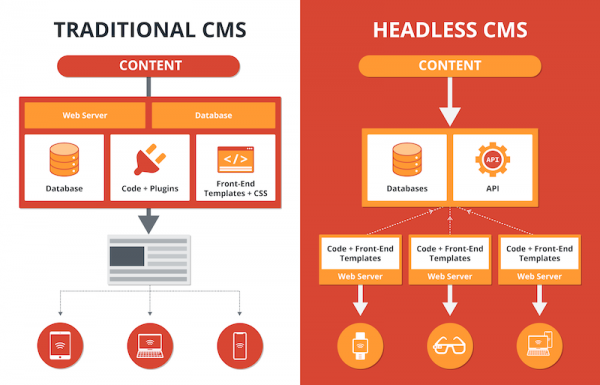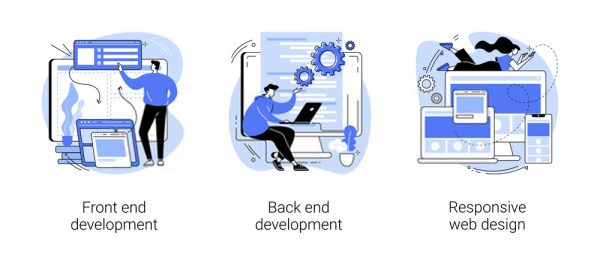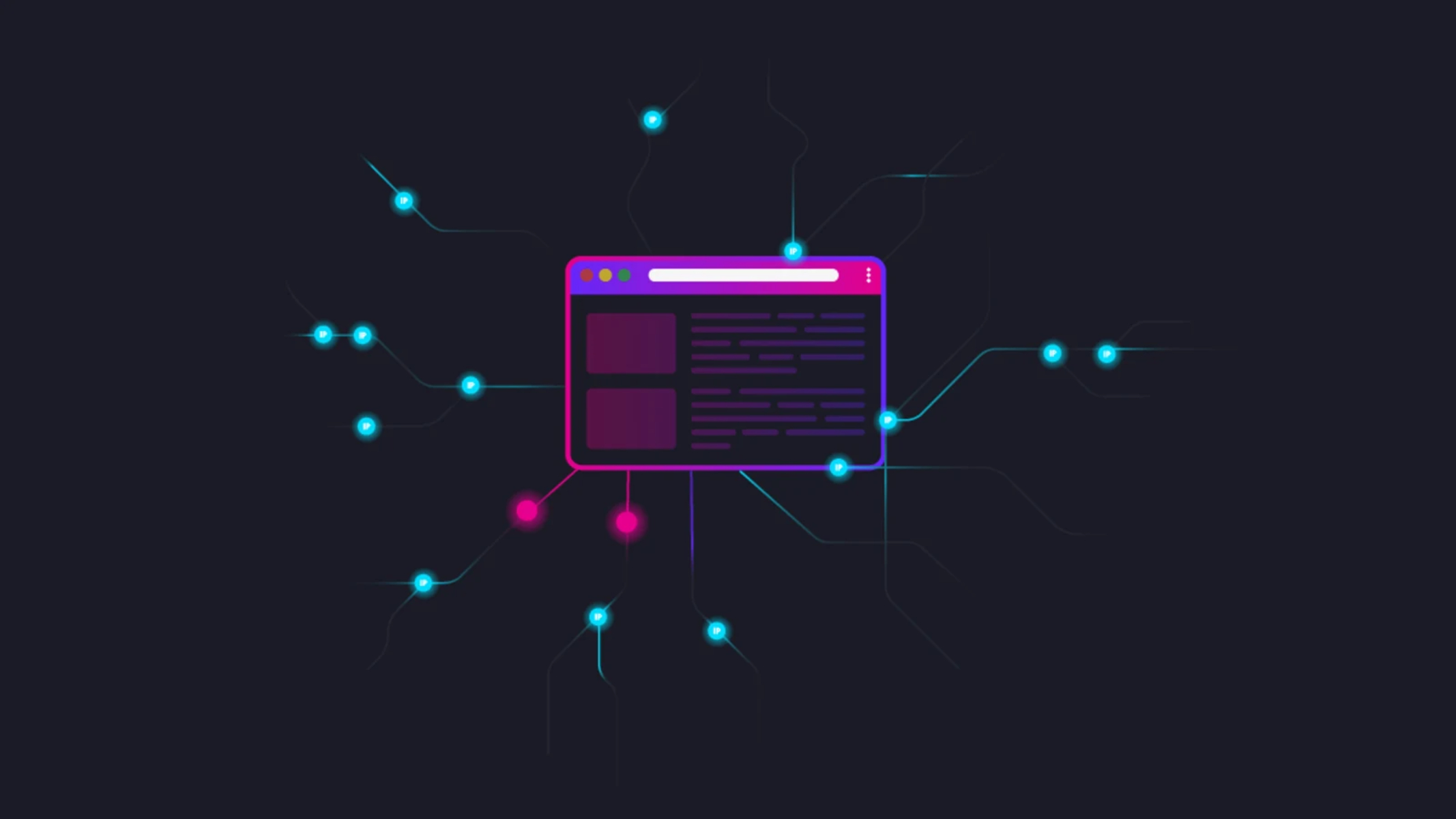The world of commerce and eCommerce is changing due to the shifting trends in consumer technology. We no longer rely solely on mobile phones and computers to access different platforms and services. Instead, we have the Internet of Things (IoT) and many various hardware and software platforms. As a result, eCommerce businesses have increasingly turned to headless eCommerce to adapt to the changing trends.
What Is Headless Ecommerce?


Put simply, headless eCommerce is the decoupling of the front-end experience and back-end systems of eCommerce businesses. The API architecture of headless eCommerce bridges the gap between the two, creating a smooth and seamless customer experience.
In a headless eCommerce architecture, the “head” or front-end is decoupled or removed. Hence, you only have the back-end left to operate the entire thing. In this case, developers would need to use APIs to call on things like customer reviews, products, or posts. The great part about this is that customers and users can call on these actions with any device or screen. This thus increases the number of potential touchpoints not limited to websites or apps.
On the other hand, front-end programmers and developers need to think differently compared to traditional eCommerce. That’s because they no longer focus on website designs and layouts. Instead, they need to work on presentation layers to display the content through any framework.
What Is Front-End?


Front-end is the face of the whole eCommerce experience and is essentially what the customer directly sees. This usually takes the form of a website’s user interface, including things like visuals, images, buttons, and content.
Beyond the website’s interface, the presentation layer itself is just as vital.
What Is Back-End?


Back-end systems function behind the scenes and are only accessible to developers. For example, your application, database, and server fall under the back-end architecture.
Back-end systems contain everything like digital assets and content managed by a DAM or CMS. These systems control and direct the operations of your eCommerce platform. They dictate how customers place orders, make payments, etc. Moreover, they also include third-party integrations and business logic.
If you’re still confused, let’s take a real-life eCommerce process as an example. Say you have a customer scrolling through your website. They find something interesting and click on a link. What happens is that they open a page with different content from the previous page. However, what they don’t see going on here is the back-end, which is the structure between pages and data storage. The back-end is also responsible for redirecting the user from page to page.
In summary, the back-end consists of the architecture, processes, and systems in place that make everything happen. It’s the backbone of your eCommerce platform. After all, it’s no use having a user interface if nothing works or interacts.
Why Should We Care About Headless Ecommerce?


Headless eCommerce may be new and difficult. Nonetheless, it’s important to understand why you should consider headless eCommerce and why it’s important to the future of business.
Headless Ecommerce Is Built for the Internet of Things
Firstly, headless eCommerce was propelled by the emergence and popularity of IoT devices. Consumers no longer use one or two electronic devices. There has been a rise in the types of consumer electronics and it’s not just limited to mobile phones. Nowadays, we use devices like smart speakers, voice assistants, smart appliances, smartwatches, and even smart cars.
Also Read: Beginner’s Guide to Smart Home Automation
As a result, customers who’ve grown accustomed to such devices want increased accessibility. For example, they’d want to easily purchase products by telling Amazon Alexa or Google Assistant through their speaker. They may also want to access their favorite services like Spotify or Netflix through different touchpoints. Hence, not only should smartphone apps provide this experience, but also several other smart devices.
For this reason, developers need to learn to adapt to different platforms. However, creating front-end mechanisms for each one, complete with entire user interfaces, isn’t always practical. Moreover, they’re not even always possible because voice assistants don’t truly have a formal front-end system. As a result, headless eCommerce becomes not just an option but arguably the only means to adapt.
It Makes Front-End Development Convenient
Traditional eCommerce systems usually need to overhaul databases and back-end systems when revamping front-end platforms. That’s why even small customizations or new features take time and a lot of effort to create. However, that’s not the case when you adopt headless eCommerce.
That’s because headless eCommerce platforms can remove the front-end altogether. Hence, front-end developers can make new user experiences from the top without worrying about back-end architecture. All front-end developers need is to make API calls to put things in action.
Customization Is Endless
Traditionally, eCommerce platforms provide carefully crafted user experiences that have little flexibility. This goes for both users and administrators of the eCommerce platform. Of course, this strategy can be useful if traditional platforms are the best platform for your target market. However, that’s not always the case, especially with the rising demand for flexibility.
A headless eCommerce platform mitigates this problem entirely. That’s because they don’t chain developers or users to a single user experience. On the contrary, back-end developers can do as they please with the user experience, even building it from scratch. There’s infinitely more control without being chained to a full-stack usually found in traditional eCommerce.
Adopting Headless Ecommerce Keeps You Competitive
Headless eCommerce is the pathway to the future. It can allow eCommerce businesses to quickly deploy changes and updates without tampering with the back-end.
As a result, headless eCommerce allows businesses to deploy updates as rapidly as they can create them. Without the constraint of the front and back end being tied together, headless eCommerce can deploy things quickly. In fact, Amazon, one of the leading businesses in headless eCommerce, reportedly updates every 11.7 seconds.
On the other hand, front-end developers can easily modify things to adapt to the changes in consumer technology. The hardware industry for consumer technology changes rapidly and is constantly rolling out new products. Hence, it’s important for software developers, including eCommerce platforms, to adapt to the changing tides.
Developers need to be able to support various new technology such as smartwatch operating systems, voice assistants, and more. Headless eCommerce allows for this and at a fast pace at that. It’s perfect for creating new customer experiences through various channels.
Moreover, it’s the best way to put marketing at the forefront without being bogged down. Lastly, because of the unconstrained nature of headless eCommerce, developers can deploy these new sites in just a few days.
Headless Ecommerce Creates Consistent Customer Experience
Customer experience is one of the most important parts of creating the best eCommerce platform. Thankfully, this isn’t something you sacrifice but instead improve upon with headless eCommerce.
That’s because headless eCommerce is very flexible and can translate its system into different channels. Hence, customers can expect a consistent and personal experience every time, regardless of the touchpoint. This creates trust between eCommerce brands and customers who want as little confusion as possible across different platforms.
Headless Ecommerce Optimizes Conversion
One of the benefits of headless eCommerce is the ability to test and experiment with different approaches without much compromise. For instance, you can try creating different back-end search solutions while maintaining the same front-end. This prevents users from being shocked at sudden front-end changes.
Furthermore, it’s a great way to test the waters and see which approach is best for your business. You can run tests, optimize everything in the back-end, and understand your customers better without difficulty.
It Allows Faster Deployment in the Market
Omnichannel strategies are the norm these days because users want the same seamless experiences across different platforms. As a result, many businesses look to headless eCommerce solutions to make things flow quicker.
That’s because headless eCommerce solutions free front-end developers to focus on creating the best experiences in different channels and touchpoints. They don’t need to think of revamping the back-end for every single platform. All they need is to call on APIs from a central location. As a result, headless eCommerce systems make deployment to various channels faster.
Of course, in theory, you could run omnichannel retail experiences using traditional eCommerce platforms. However, this can be tedious and slow because you’d have to think of both the front and back end. Moreover, it will be difficult to scale things without taking too much time.
It’s Cheaper to Scale
Traditional eCommerce platforms require tedious amounts of development on both the front-end and back-end. That’s especially true if traditional businesses want to scale and diversify their channels. Therefore, it’s much cheaper to scale things when the front-end and back-end are decoupled.
Headless Ecommerce Is an Efficient Solution
Lastly, headless eCommerce is more efficient if you’re a business with multiple online stores across many locations and languages. It can be difficult to maintain both the front-end and back-end of so many storefronts long-term. Not to mention it’s more tedious, time-consuming, and costly.
However, with headless eCommerce, you’re free to use the same back-end for all your websites. Hence, you can manage multiple websites all at once while ensuring everything is consistent at the same time.
Drawbacks of Headless Ecommerce


There are plenty of benefits to adopting a headless e-commerce system. However, there are also, unfortunately, a couple of drawbacks to consider before you jump in.
Continuous Costs
While decoupling the front-end and back-end offers flexibility, it also increases the ongoing costs. That’s because front-end developers need to build presentation layers individually. Every touchpoint requires one, and while this is great for tailoring the front-end per channel, it’s costly in the long run. Creating front-end layers per channel from scratch takes time and money. Moreover, troubleshooting not only happens for one front-end channel but multiple.
Marketer Isolation
There’s also the issue of isolating the marketers because they’re more reliant on the IT team. They can’t preview content on test devices the way they would for traditional commerce platforms. Moreover, it’s not as easy to devise and publish content independently.
Marketers need to work closely with IT for both presentation and content layers.
Front-End Developers Need to Start From Scratch
We already mentioned that front-end developers are freer to create and customize presentation layers without worrying about back-end hindrances. However, as much as headless e-commerce makes customization easy, this also makes front-end development slightly inconvenient. That’s because this quality forces front-end developers to create everything from scratch. They have to start over, whether it’s in terms of the landing page or product page.
An Inevitable Adjustment to Make
Based on the current trend in consumer technology, headless e-commerce is the future of e-commerce. Whether you’re an online seller or service provider, it’s essential to integrate headless e-commerce solutions into your business. That’s because the age of the Internet of Things demands flexibility and omnichannel strategies from online businesses. It’s not enough to be satisfied with one touchpoint if you want to stay ahead and remain relevant.
Headless e-commerce is also a better alternative to traditional e-commerce overall. That’s because it’s more flexible and adaptable regardless of changes in consumer technology. It’s also a bit faster to implement and deploy compared to traditional e-commerce solutions. Hence, it’s unsurprising that the industry seems to be going more and more headless.

























